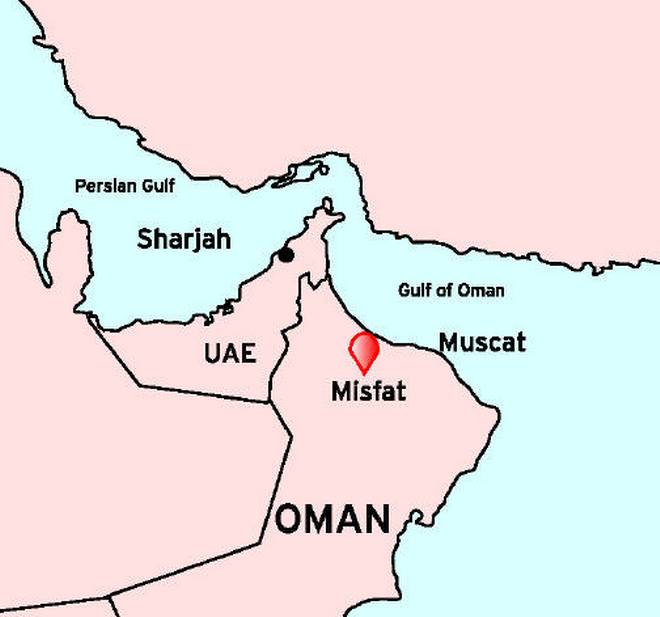Raksha Kumar visits a 200-year-old village in Oman that is struggling to retain its old-world charm against the onslaught of development.
A tranquil drive on the arid roads for about 225 km to the South East of Muscat brings you to Misfah. Drowsy Misfat Al Abryeen, often known as Misfat or Misfah, is a traditional village in Oman that is fighting to maintain its old world charm against the onslaught of modern development that is sweeping across the rest of the country.
Misfah is located in Wilayt Al Hamra in A’Dakhiliyah Region of Oman. It is characterised by its narrow alleys, rare traditional buildings, intricate mud structures, and agricultural terraces that wrap around the mountain. Misfah rises a 1,000 metres above sea level. The homes of its inhabitants are at the top of the mountain and their farms are on the slope. It is said that the first house in Misfat Al Abriyeen village was built 200 years ago. Some say this village is the oldest in Oman.
At first glance, one can confuse the village for a medieval Italian village with yellowish brown stone houses, some of which have been abandoned. Vehicles are not allowed into the village, they need to be parked at a height near the entrance. Navigating down one of the several hidden side alleyways will take you down a rabbit hole of twisting lanes, covered and uncovered passages, tall gateways and twisty flights of steps — which might lead you to the bottom of the hill on which the village rests. A falaj — a canal that provides water for human settlements and irrigation in hot, arid and semi-arid climates — runs along all sides of the village. The hamlet is surrounded by colourful bougainvillea, banana palms, radish shrubs and other greenery. Along the way, a lime tree can surprise you.
The lush green fields in the village are a testament to the fact that old methods of irrigation in a desert could effortlessly bring about astonishing greenery.
On the far end of the hamlet there is a rocky, dry, steep-sided gorge crowded with date palm, reminding you of the fact that this vegetation is in the middle of a desert. The falaj runs on a simple principle where there are gaps at strategic points from where subsidiary channels run off into fields below; these are kept blocked with stones, which are removed when the adjacent fields need irrigating.
It is easy to lose your way within the village. The winding pathways quite possibly lead you back to where you began. It is advised to refer to the map before embarking on a journey into the village. Up on the hillside rests a ruined watchtower which stands above the village, and which is said to be over a 1,000-years-old.
Further along the watchtower, there are bath areas, and a view point. People here have excavated rocks to build cities and gardens, flattened the terrain into terraces to have fertile soil for their farms, and dragged water into the mountain and made it flow through spiral channels so as to irrigate the land and provide drinking water for the villagers.
In this traditional village, time seems to have stood still. The people in the village were very welcoming but they expressed concerns about commercialisation, culture intrusion, as well as loss of privacy. This might just be the only village that is holding fort in preserving the culture of the desert country.
If you see Misfah village from a distance, you will imagine that the mountain grows houses and forts among its trees and flowers. But, it might not be long before this village is enveloped by the forces of modernisation.
Published in: The Hindu
Published on: July 13, 2014
Link: http://www.thehindu.com/todays-paper/tp-features/tp-sundaymagazine/a-glimpse-of-the-past/article6205017.ece


